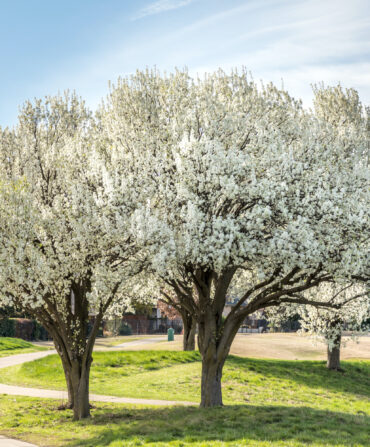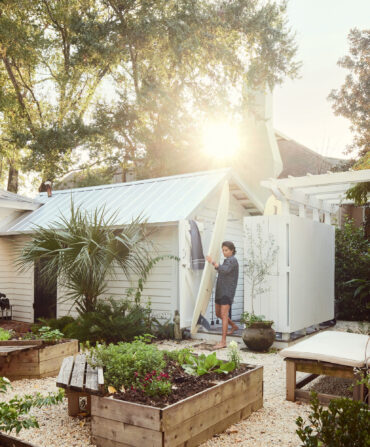Just outside Fredericksburg, Texas, a tiny oasis of limestone buildings and gardens juts out of the rugged Edwards Plateau, forming an idyllic homestead called Triple Creek Farm. Built in the mid-nineteenth century by German immigrants, the original farm continued as an agrarian outpost for decades and later thrived as a cattle ranch and hay producer. Today, hay is still harvested on the property, and the home’s sprawling garden has been revived, with the help of Texas landscape designer Sarah Lake.
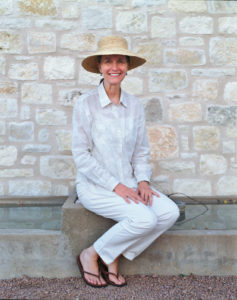
Photo: John Hall
Landscape designer Sarah Lake.
Using a mix of indigenous building materials and plants, such as pink crushed granite, Lombardy poplars, drifts of lavender, limestone walls, and blush roses, Lake has created a landscape that meshes seamlessly with the farm’s historic structures and the hardscrabble Hill Country terrain that surrounds them.
This is what Lake does best: designing landscapes with an innate sense of place. And she’s been doing it for thirty-odd years now, cultivating clients across Texas and beyond who share her vision. “The thing about the Hill Country,” Lake says, “is that it’s largely open. The trees are not enormous except the ones in creek beds and river bottoms. You have lots of sky and undulating topography. We did low walls—and walls behind walls—so that you were looking over them into the landscape. There is no place in this garden that is closed off to a view.”
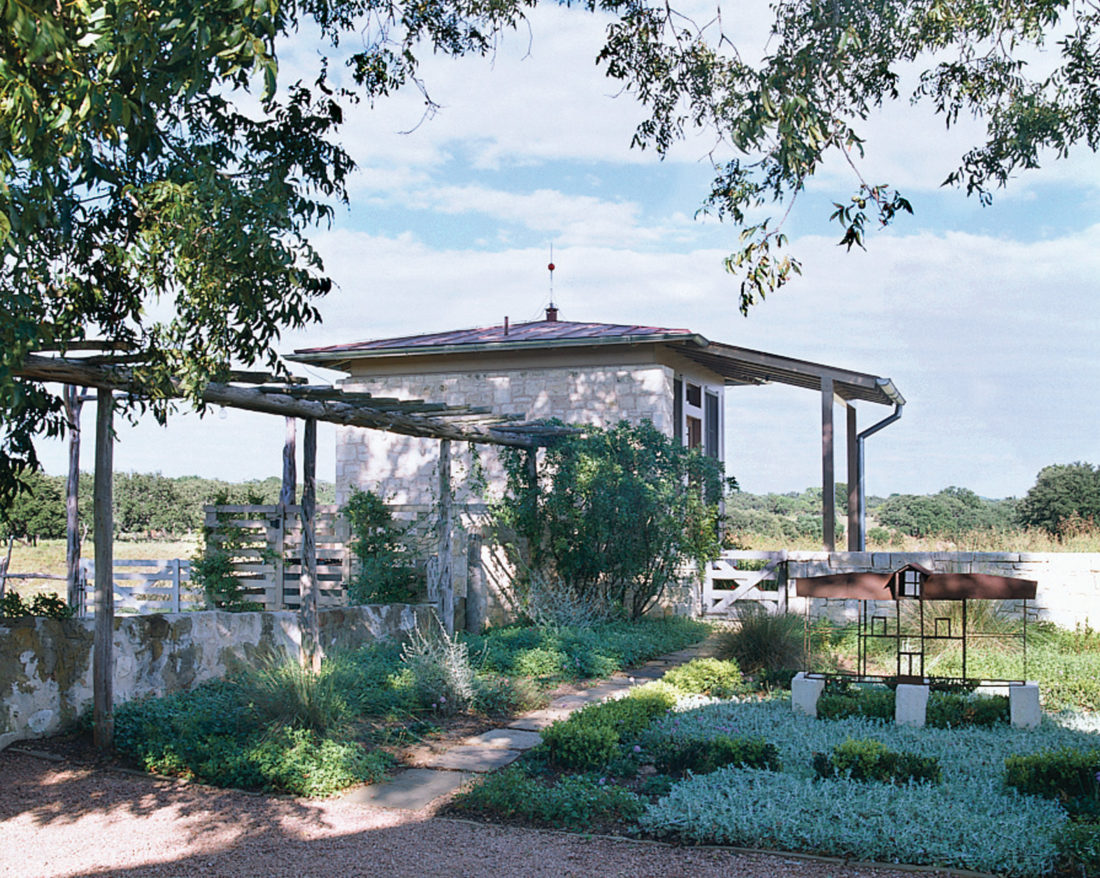
Photo: John Hall
Boxwoods frame the back garden.
Another defining geological feature is the aquifer leaks, called seeps, in the region’s sedimentary rock. In those moist places, trees grow in even lines so that bands of live oaks appear every twenty feet or so. Lake considered the oaks thematic material and used similar lines to construct the garden and define livable space.
If you didn’t know better, you would swear that Lake’s first career was not as a flutist but as a film director, since her gardens are so much about the art of seeing. Then again, she could have been an archaeologist, because the local artifacts that she has brought back to life in the Triple Creek garden reference the farmers who once lived here. (The farmhouse itself, restored by a Texas architect, serves as the owner’s bedroom.) A rusted old cistern was refurbished and collects water for irrigation. Original horse troughs became water features, and three “sister houses” of local limestone and cypress echo the old traditions.
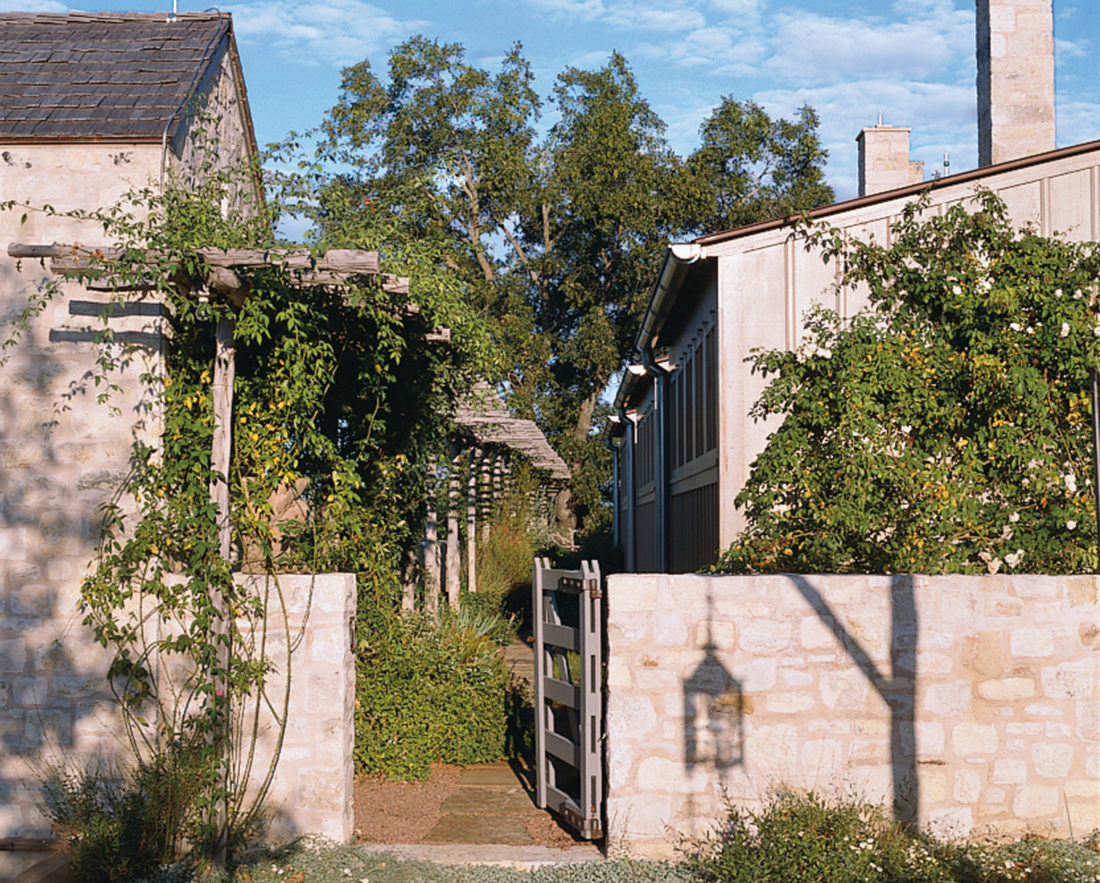
Photo: John Hall
Rosa ‘Reve d’Or’ climbs on walls near the gated entrance to the sister cottages.
The materials have history, and the plants in the garden have roots here, too. Arbors drip with Texas clematis. An orchard of Mexican plum trees flanks the farmstead.And walking paths between the buildings are lined with creeping violets, marsilea fern, and other low-growing plants that date back to the homesteading era.
Nature intended the plants that Lake selected to grow here, so they’re tough enough to survive a place where rain arrives in short bursts. “Notice that there was no Dust Bowl here,” Lake says. “The German immigrants were sensitive farmers and careful with water management.” And so is Lake, which is exactly why this garden will no doubt thrive for another generation.




